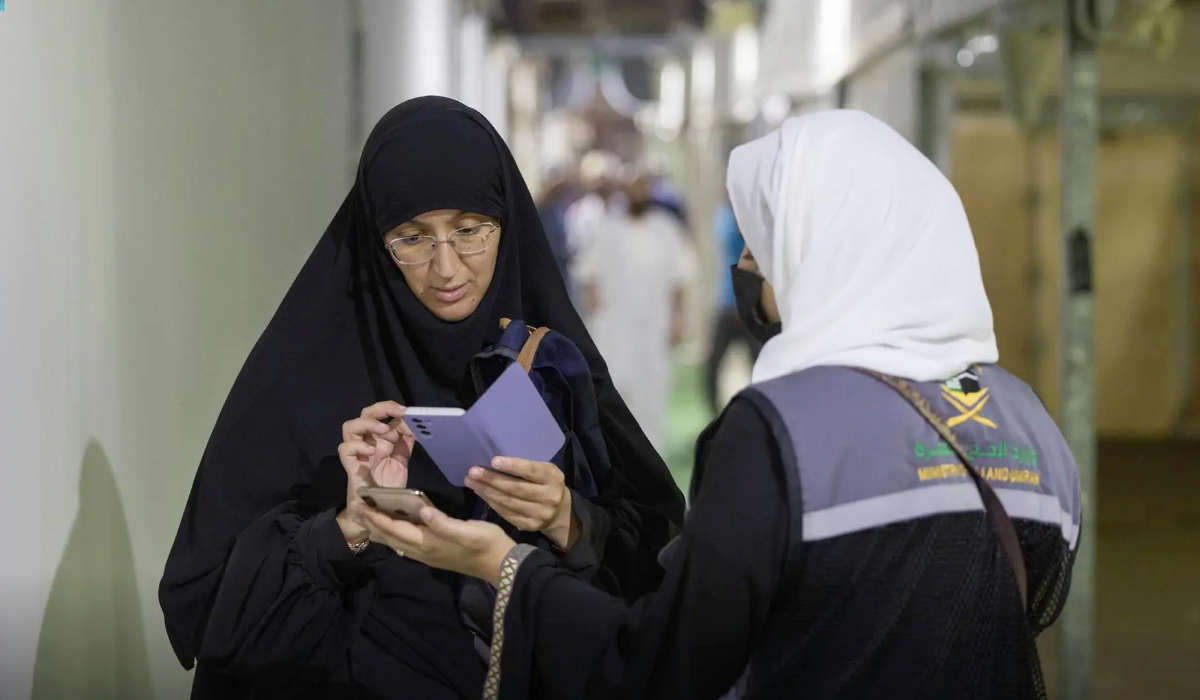RIYADH: Pilgrims once had to undertake lengthy procedures before embarking for Hajj, but with technology at the forefront, planning the spiritual journey now is only a few clicks away.
On arrival, international pilgrims simply scan their QR (quick response) code that holds their e-Visa, fulfilled by the newly launched platform Nusuk, designed for Hajj and Umrah.
Hiba Abdulhameed, an Egyptian pilgrim visiting for Hajj this year for the first time, told Arab News: “I used the (Nusuk) application to fulfill my booking and reservation, and everything worked out great. We are here now and the application did everything needed.”
For the first time, the Public Transport Authority launched a series of self-driving shuttle buses to transport pilgrims around the city of Makkah.

To transport pilgrims around Makkah, the Saudi Public Transport Authority introduced self-driving shuttle buses. (SPA)
The autonomous vehicles can carry 11 passengers and cover up to 4 km at speeds of up to 30 km per hour for six hours before being recharged.
For the safety of pilgrims, the Saudi Data and AI Authority created a device dedicated to facial identification of visitors, called Banan, which offers hassle-free verification, and authorizes travel records and permits.

Application developers in Saudi Arabia have contributed to the new wave of technology in the for the facilitation of Hajj procedures. (SPA)
Application developers in the Kingdom have also contributed to the new wave of technology in the for the facilitation of Hajj procedures.
Apple Academy graduates Roba Alghanmi, Remaz Alghamdi, Rawan Alsufyani, Raniyah Alotaibi and Sara Alhumidi spoke to people about their experience in Hajj and found that a large number were getting lost in the city.

Saudi Data and AI Authority created a device called Banan that provides hassle-free verification of travelers and authorizes travel records and permits for pilgrims. (SPA)
As a result, the team of developers created Wejha, a guidance application available in five languages, to help pilgrims find their way around Makkah by providing 2D and AR maps.
Alghanmi said: “Through our research, interviews and surveys, we found that out of 150 of those who visited the Holy Mosque recently, 59 percent tend to get lost and 76 percent struggle in finding their destinations. We wanted to introduce technology to serve the visitors and facilitate their visit with easy access to their destinations.”

Hajj workers can access pilgrims' data through an app, enabling them to assist and guide them whenever necessary. (SPA)
The app is available in Arabic, English, French, Turkish and Urdu.
“Hopefully, in the future, we will include more languages,” Alghanmi said.
She wants Wejha to be a part of the Vision 2030 aim to enhance the pilgrim experience to its fullest potential.
“So, aligning with the Vision, we hope to serve the Holy Mosque and provide its visitors with easy access to their destination through the application.”

















